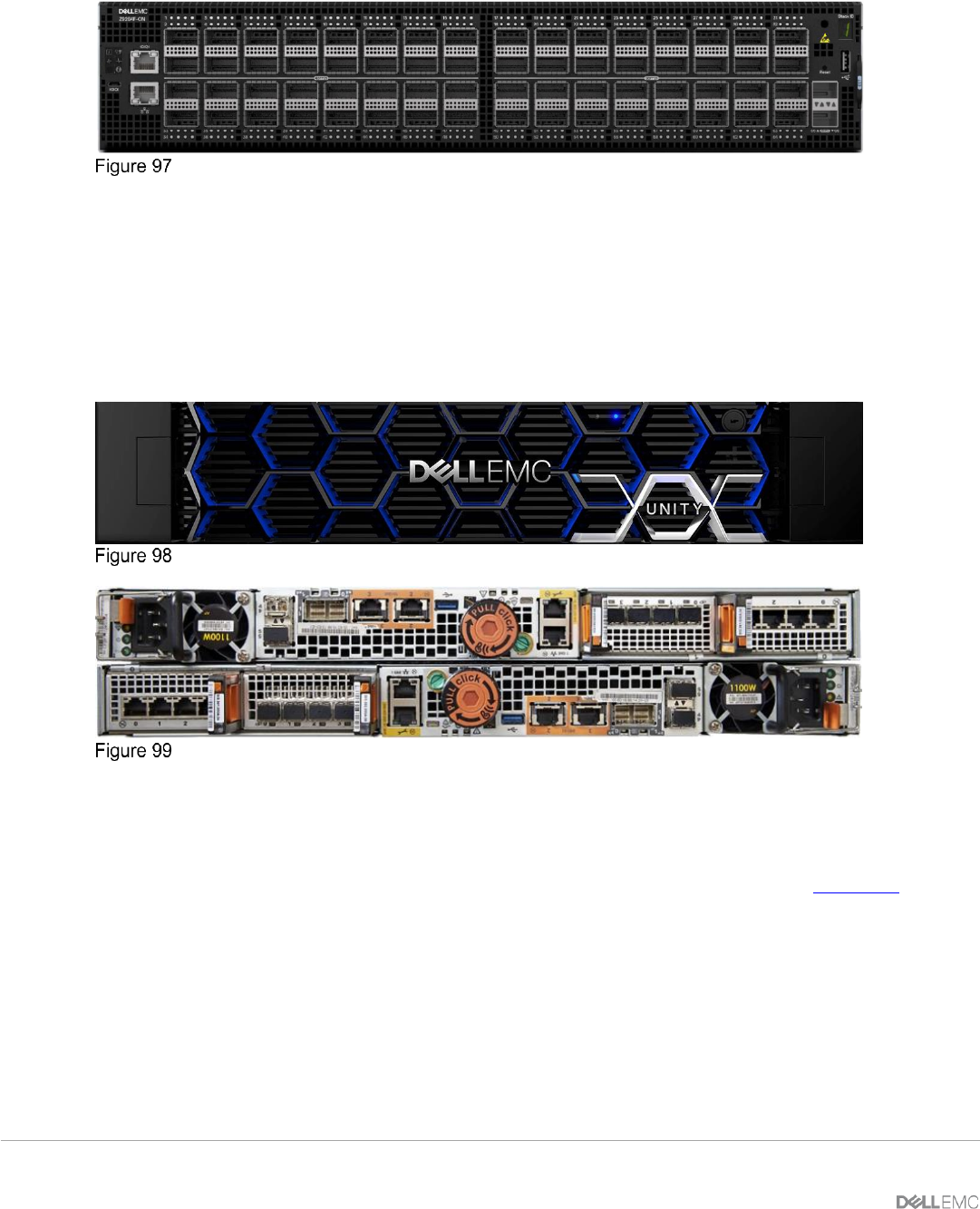Users Guide
Table Of Contents
- 1 Introduction
- 2 SmartFabric Services for PowerEdge MX: An overview
- 3 SmartFabric mode requirements, guidelines, and restrictions
- 3.1 Create multi-chassis management group
- 3.2 Upstream network requirements
- 3.3 VLAN scaling guidelines
- 3.4 Configuring port speed and breakout
- 3.5 Switch slot placement for SmartFabric mode
- 3.6 Switch-to-Switch cabling
- 3.7 NIC teaming guidelines
- 3.8 Maximum Transmission Unit (MTU) behavior
- 3.9 Other restrictions and guidelines
- 4 Creating a SmartFabric
- 4.1 Physically cable MX chassis and upstream switches
- 4.2 Define VLANs
- 4.3 Create the SmartFabric
- 4.4 Configure uplink port speed or breakout, if needed
- 4.5 Create Ethernet uplink
- 4.6 Configure Fibre Channel universal ports
- 4.7 Create Fibre Channel uplinks
- 4.8 Configuring the upstream switch and connect uplink cables
- 5 Deploying a server
- 6 SmartFabric operations
- 7 Switch operations
- 8 Validating the SmartFabric deployment
- 9 SmartFabric troubleshooting
- 9.1 Troubleshooting errors encountered for port group breakout
- 9.2 Troubleshooting Spanning Tree Protocol (STP)
- 9.3 Verify VLT/vPC configuration on upstream switches
- 9.4 Discovery of FEM and compute sleds
- 9.5 Troubleshooting uplink errors
- 9.6 Troubleshooting FC/FCoE
- 9.7 SmartFabric Services – Troubleshooting commands
- 10 Uplink configuration scenarios
- 10.1 Scenario 1 - SmartFabric deployment with Dell EMC PowerSwitch Z9100-ON upstream switches
- 10.2 Scenario 2 - SmartFabric connected to Cisco Nexus 3232C switches
- 10.3 Scenario 3: Connect MX9116n FSE to Fibre Channel storage - NPIV Proxy Gateway mode
- 10.4 Scenario 4: Connect MX9116n FSE to Fibre Channel storage - FC Direct Attach
- 10.5 Scenario 5: Connect MX5108n to Fibre Channel storage - FSB
- 10.6 Scenario 6: Configure Boot from SAN
- A Hardware used in this document
- B Dell EMC Unity information
- C Additional information
- D Validated components
- E Technical resources
- F Support and feedback

115 Dell EMC PowerEdge MX SmartFabric Configuration and Troubleshooting Guide
Provides up to 64 ports of 100GbE QSFP28 or up to 128 ports of 1/10/25/40/50GbE ports using breakout
cables. This switch may be used as a leaf or spine switch in a Leaf-spine topology.
Dell EMC PowerSwitch Z9264F-ON
A.5 Dell EMC Unity 500F storage array
The Unity 500F storage platform delivers all-flash storage with up to 8PB raw capacity. It has concurrent
support for NAS, iSCSI, and FC protocols. The Disk Processing Enclosure (DPE) has a 2-RU form factor,
redundant Storage Processors (SPs), and supports up to twenty-five 2.5" drives. Additional 2-RU Disk Array
Enclosures (DAEs) may be added providing twenty-five additional drives each. This array is used for the FC
connections in this document.
Dell EMC Unity 500F front view
Dell EMC Unity 500F rear view
A.6 Cisco Nexus 3232C
The Cisco Nexus 3232C is a 1-RU fixed form-factor 100GbE switch with thirty-two QSFP28 ports supporting
10/25/40/50/100GbE. A pair of Cisco Nexus 3232C switches are used as leaf switches in Scenario 2 in this
guide.










